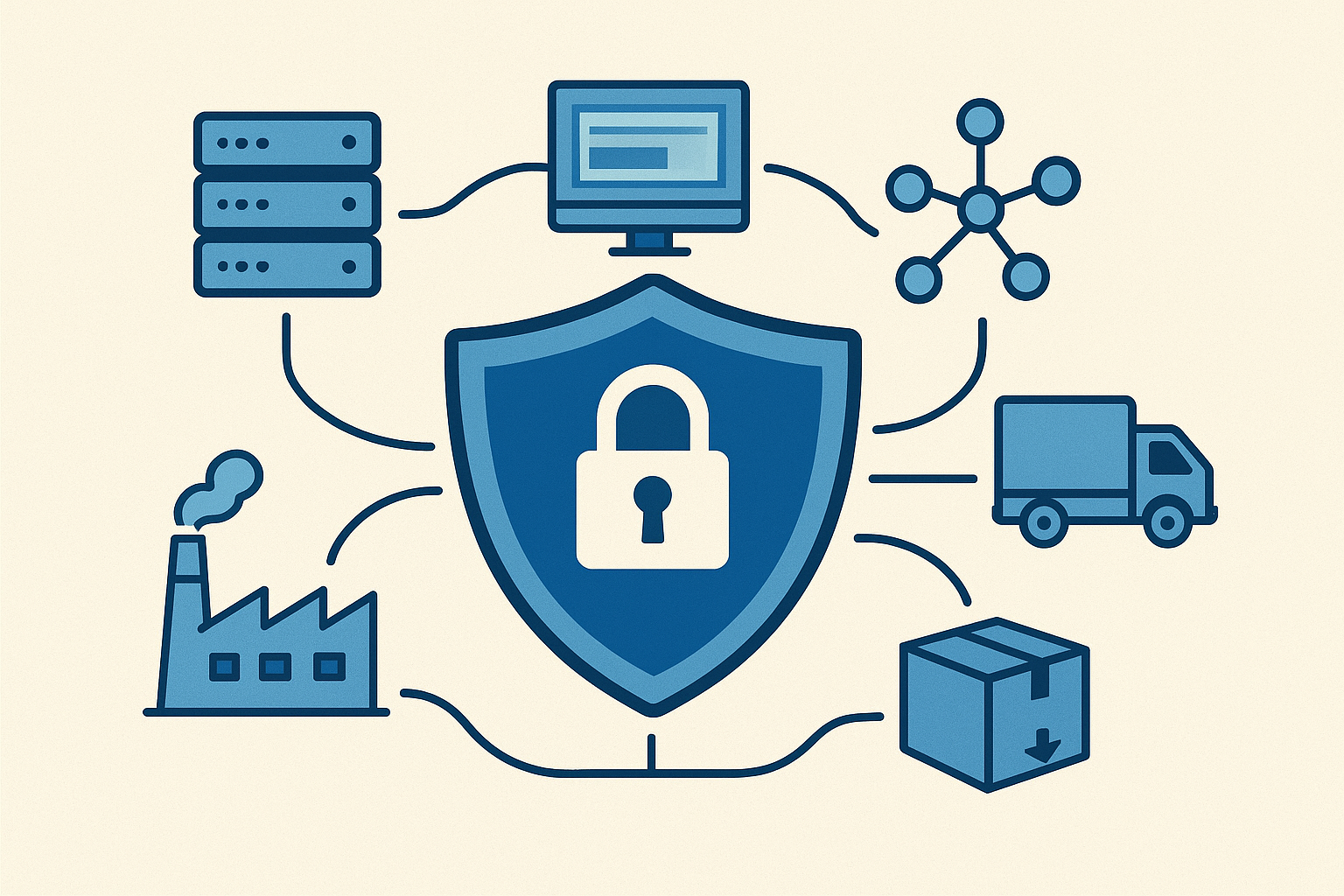
Introduction
Critical infrastructures and supply chains are essential to the operation of any organization. From industrial plants and utilities to transportation networks and technology providers, keeping these operations protected is a priority. Cyber attacks on these infrastructures can have devastating consequences, not only for the affected company, but for the entire global economy.
In this article, we will explore key defense strategies to protect these critical infrastructures and ensure that supply chains continue to operate without disruption. We will discuss how to identify vulnerabilities, how to manage risks and what measures to implement to secure these vital assets against external and internal threats.
Table of Contents
What are critical infrastructures and why should they be protected?
Definition: Critical infrastructures are assets, systems or components that are essential to the safety, public health or economy of a country or organization. They include power grids, telecommunication services, power plants, water networks, financial systems and more.
Risks: Disruption of these services can have catastrophic effects on social and economic stability, making the protection of these infrastructures a priority for governments and companies.
Example: An attack on a power plant could cause a massive blackout, affecting millions of people and businesses, with severe impacts on the local economy.
How to protect critical infrastructures?
Vulnerability assessment: Conduct a risk analysis to identify vulnerabilities in your critical infrastructure. This includes both physical and cyber threats.
Physical security: Ensure that critical facilities are protected against unauthorized access, natural disasters and sabotage.
Cyber security: It implements robust security protocols such as data encryption, network monitoring and multi-factor authentication to protect digital networks and systems.
Example: If you manage a power plant, you can implement a physical access control system to limit the entry of unauthorized persons and an advanced firewall to protect your automation systems.
Protection of supply chains
Supply chain vulnerabilities: Supply chains are equally vulnerable to attack as they rely on multiple suppliers and interconnected systems. A targeted attack on a supplier or transportation infrastructure can disrupt production and decrease efficiency.
Defense strategies:
Vendor evaluation: Make sure your vendors comply with robust security protocols.
Risk management: Continuously monitors the risks associated with the supply chain, especially with external suppliers.
Diversification: Don't depend on a single supplier for critical goods. Diversification allows you to have alternatives in case of interruptions.
Example: In the technology sector, an attack on a software vendor could compromise hundreds of companies using its system, disrupting production or customer service.
Proactive measures for the protection of critical infrastructures
Zero Trust implementation: It adopts a Zero Trust model that assumes that no user or system, whether internal or external, can be trusted. This helps ensure that only authorized users can access critical infrastructures.
Redundancy and backup: Implements backup and redundancy systems to ensure that if one system fails, another can take its place and minimize service interruption.
Continuous monitoring: Use real-time monitoring tools to detect intrusions or failures before they become a major problem.
Example: If you manage a telecommunications system, having backup servers and redundancy systems for critical services will help you keep the service operational, even in case of technical failures.
Best practices for critical infrastructure and supply chain protection
Integration of physical and digital security: Critical infrastructure security must include both physical and cyber controls. Combine these two approaches to create a defense in depth.
Inter-institutional collaboration: Public-private cooperation is essential to protect critical infrastructure and supply chains. Governments must work together with companies to create security policies and incident response protocols.
Example: Governments can collaborate with telecommunications companies to create emergency protocols to restore services quickly in the event of a cyber attack.
Critical infrastructures are exposed to several types of cyber attacks, including emerging models such as the Ransomware-as-a-Service (RaaS). This model, where attackers rent their ransomware services to others, can be devastating for organizations that do not have adequate protection. If you would like to learn more about how this type of threat works and how to protect yourself, we invite you to read our article on Ransomware-as-a-Service: how it works and how to protect yourself
Are you ready to protect your critical infrastructures and supply chains with the best defense strategies? ClickPanda offers advanced cybersecurity solutions to ensure the security of your most valuable assets.
Conclusion:
Critical infrastructures and supply chains are the backbone of global business operations, and protecting them is essential to the well-being of organizations and the global economy. By adopting proactive security strategies and collaborating with secure vendors, companies can armor themselves against cyber threats and ensure business continuity. Cybersecurity is a necessary investment to protect these vital assets.








